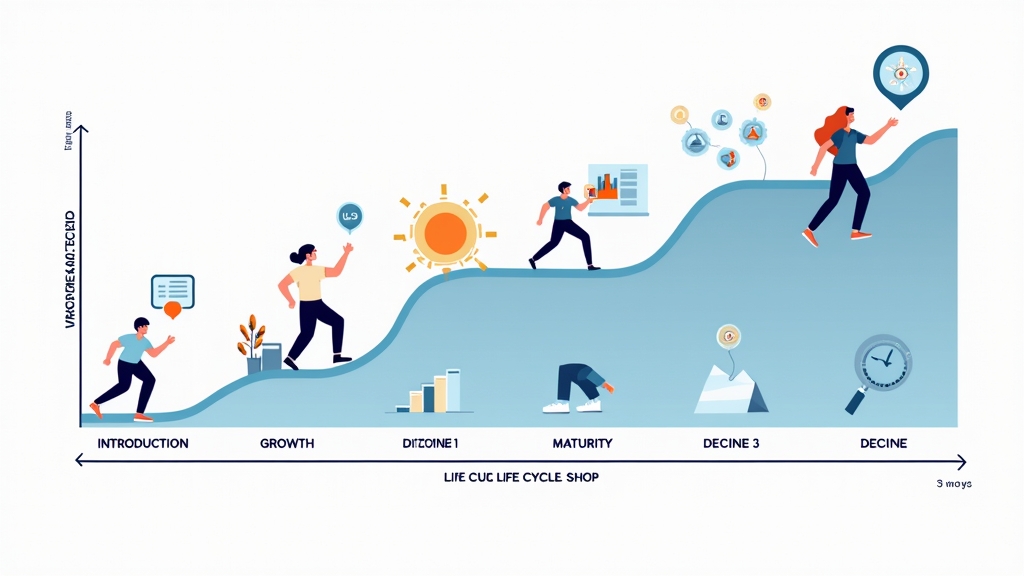Understanding Marketing: The Key Stages of the Marketing Lifecycle
Introduction
The marketing lifecycle is a crucial concept for any business strategy. It outlines the different phases a product goes through from its introduction to its decline. Understanding this lifecycle helps you make informed decisions about marketing strategies, resource allocation, and customer engagement. By recognizing each stage, you can better position your products in the market and respond effectively to consumer needs. This article will guide you through the key stages of the marketing lifecycle, helping you grasp their significance for your business.
What is the Marketing Lifecycle?
The marketing lifecycle refers to the progression of a product through various stages: introduction, growth, maturity, and decline. Each stage has distinct characteristics that influence how businesses market their products.
Understanding each phase is essential because it allows you to tailor your strategies accordingly. For instance, during the introduction stage, your focus may be on creating awareness and attracting initial customers. In contrast, during maturity, maintaining market share becomes more critical as competition intensifies. Recognizing these differences ensures that your marketing efforts align with where your product stands in its lifecycle.
The Stages of the Marketing Lifecycle
Introduction Stage
In the introduction stage, a new product is launched into the market. Characteristics include low sales volume and high costs due to promotional activities aimed at building awareness. Your primary objective here is to generate interest among potential customers.
To create awareness and attract initial customers, consider using targeted advertising campaigns across social media platforms or engaging influencers who resonate with your target audience. Offering promotions or discounts can also entice early adopters to try out your product.
Growth Stage
As your product gains traction in the market, it enters the growth stage characterized by increasing sales and profits. Indicators of success include rising brand recognition and expanding customer base.
To maximize expansion during this phase, implement strategies like enhancing distribution channels or investing in digital marketing campaigns that reach broader audiences. Engaging existing customers through loyalty programs can also help boost word-of-mouth referrals as satisfied users share their experiences with others.
Maturity Stage
A product reaches maturity when sales stabilize after rapid growth but begin to slow down due to increased competition or market saturation. Identifying this stage involves observing consistent sales figures over time without significant increases.
Strategies for maintaining market share include differentiating your product from competitors through unique features or improved customer service offerings. Regularly updating marketing messages based on consumer feedback helps reinforce brand loyalty while keeping existing customers engaged.
Decline Stage
Recognizing signs of decline is vital for any business looking to sustain profitability over time; indicators may include decreasing sales numbers or shifting consumer preferences away from your offering.
Marketing strategies during this phase might involve revitalization efforts such as rebranding initiatives or introducing new features that appeal to current trends within target demographics—considering an exit plan if necessary can also be prudent when faced with persistent declines.
Factors Influencing Each Stage
Market Trends
Market trends play a significant role in shaping each stage of the marketing lifecycle by influencing consumer preferences and behaviors over time. Staying updated on these trends allows businesses like yours to adapt quickly when necessary—whether it’s responding positively towards sustainability movements or embracing technological advancements impacting purchasing decisions.
Competitive Landscape
The competitive landscape directly affects how companies approach their marketing strategies throughout different stages of development; understanding competitors’ strengths enables you not only identify gaps within markets but also capitalize on opportunities others may overlook!
Measuring Success at Each Stage
Key Performance Indicators (KPIs)
Key performance indicators (KPIs) are essential metrics used for evaluating effectiveness at every lifecycle stage—from tracking website traffic during introductions all way up until analyzing customer retention rates post-maturity! Common KPIs include conversion rates per campaign effort alongside average order values which provide insights into overall performance levels across various touchpoints along journey maps too!
Feedback Loops
Customer feedback serves as an invaluable resource when refining marketing strategies throughout all phases; gathering insights via surveys encourages open dialogue between brands & consumers alike while fostering trust-based relationships leading towards long-term loyalty outcomes!
Adapting Your Marketing Strategies
Flexibility and Adaptation
Flexibility plays an integral part in adapting successful tactics based upon insights gained from understanding where products currently reside within their respective lifecycles—this adaptability empowers businesses like yours navigate shifts seamlessly whilst optimizing resources effectively!
Case Studies
Several brands have successfully navigated through various stages of their respective lifecycles; take Apple’s iPhone series for example—their ability continuously innovate alongside evolving technologies showcases how staying attuned industry dynamics leads sustained success even amidst fierce competition!
Conclusion
Understanding each stage of the marketing lifecycle is vital for long-term business success! By recognizing what characterizes every phase—from introduction right down until decline—you’re better equipped strategize effectively ensuring maximum impact across diverse markets while meeting ever-changing consumer demands head-on!
📢 Explore More: Continue Your Journey!
If this article helped you understand more about navigating different stages in business strategy effectively check out “Mastering Digital Marketing!” It covers powerful insights into online promotion techniques tailored specifically towards enhancing visibility & engagement with modern audiences.














![NEEWER 55W 18"/45cm Ring Light Kit [New Version], 5600K Dimmable ...](https://m.media-amazon.com/images/I/414QLqvZWLL._AC_.jpg)








